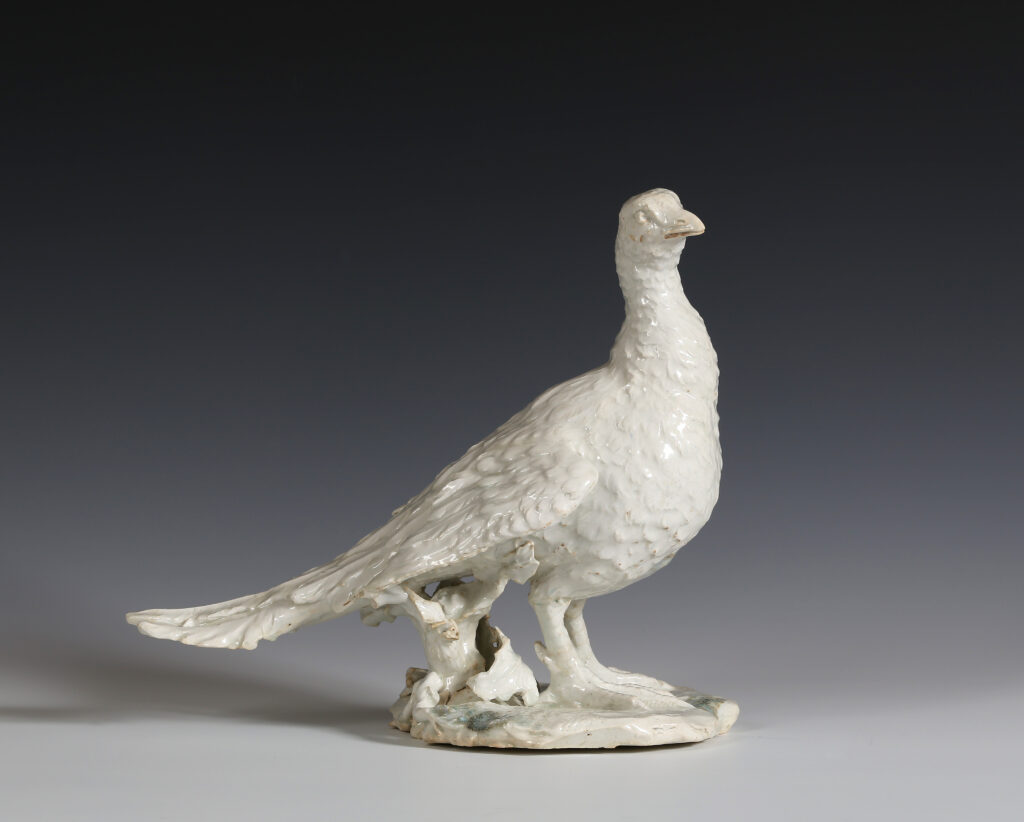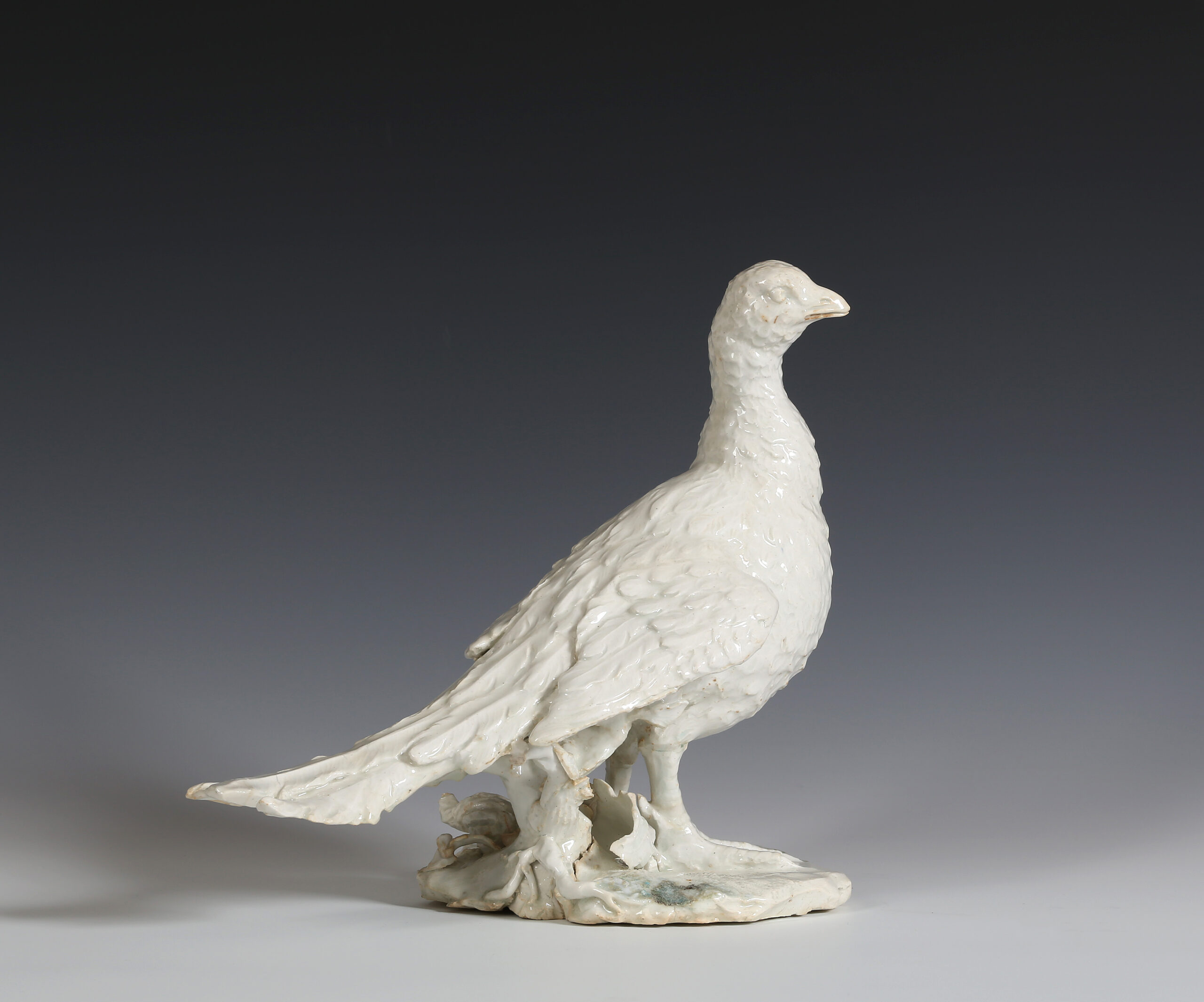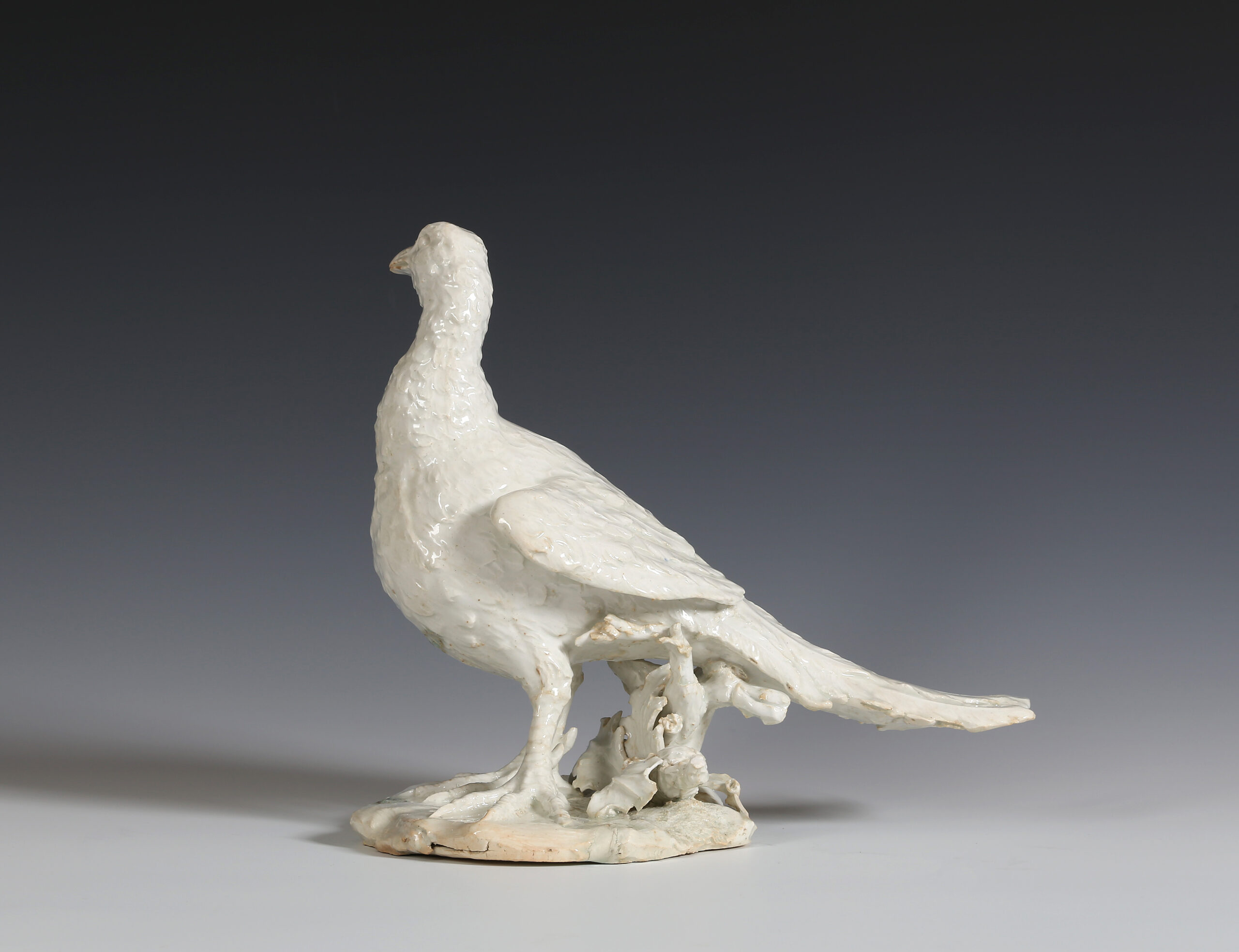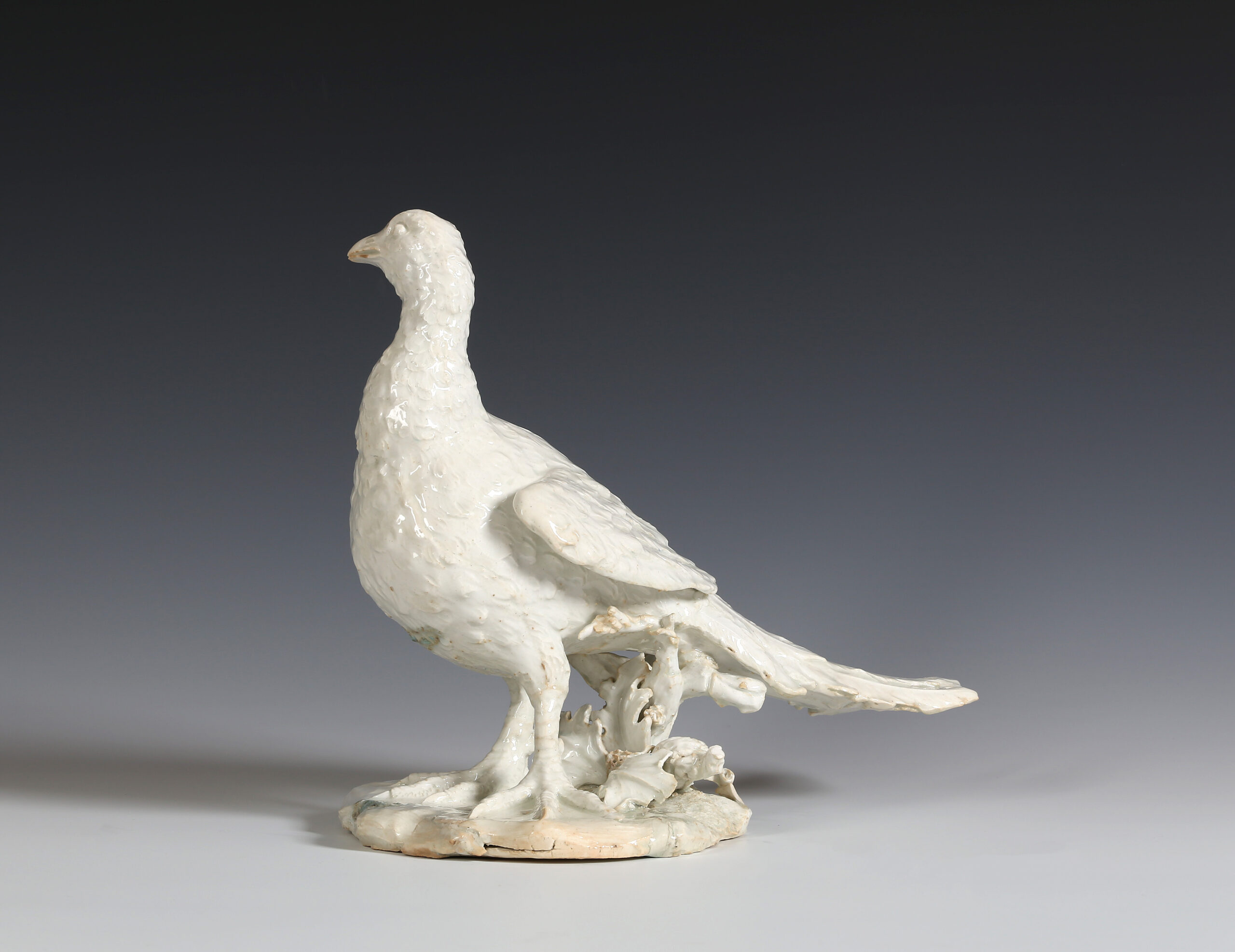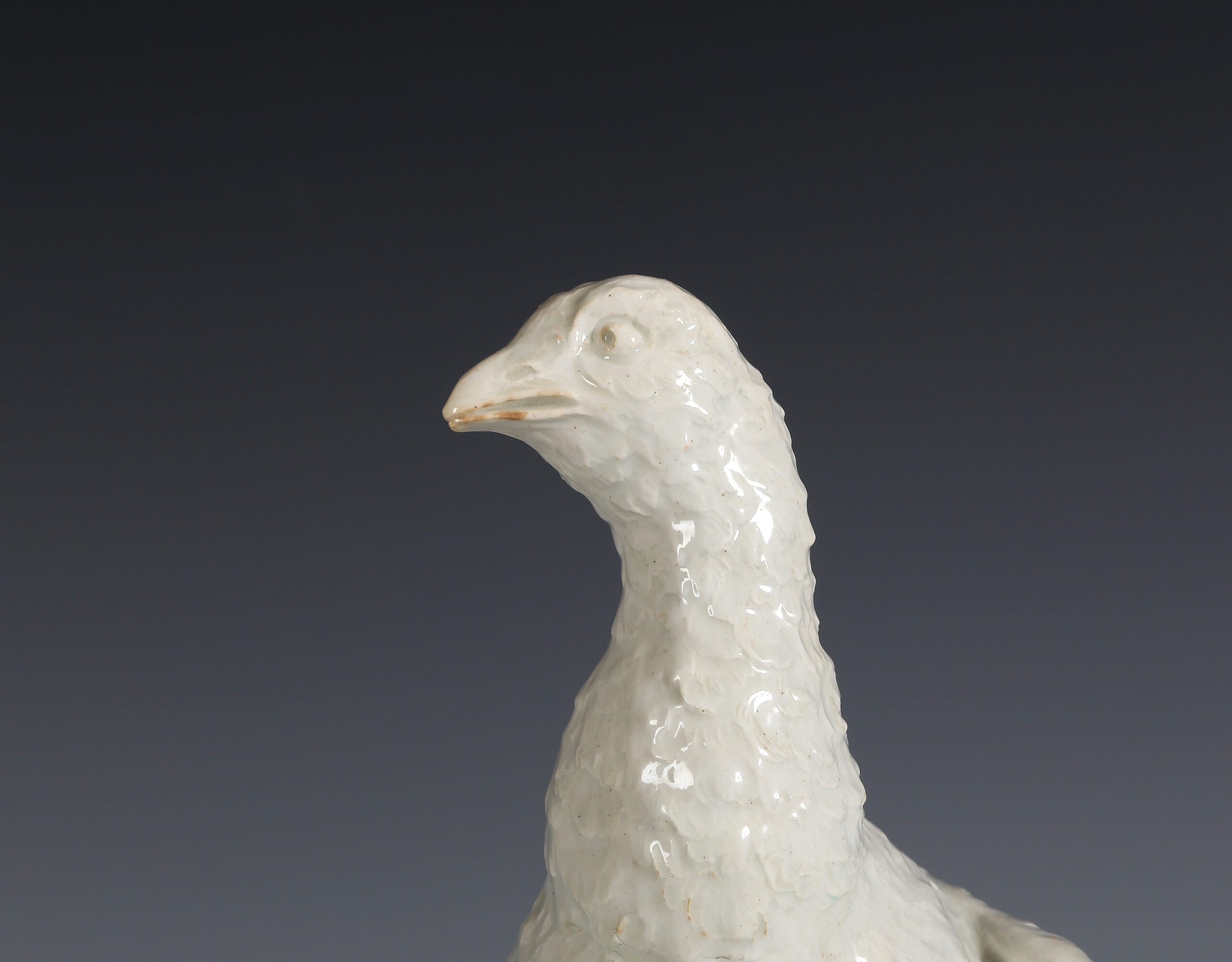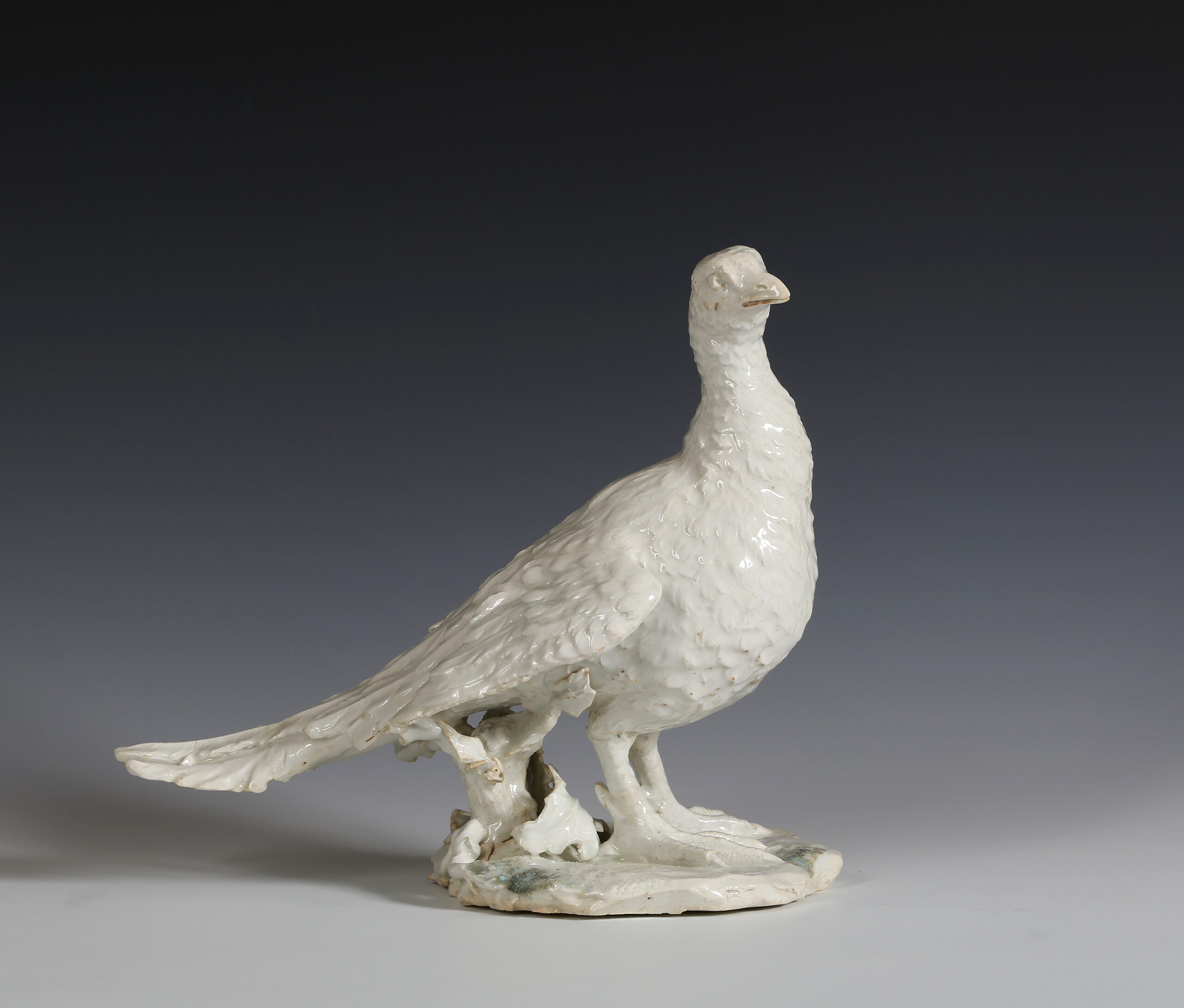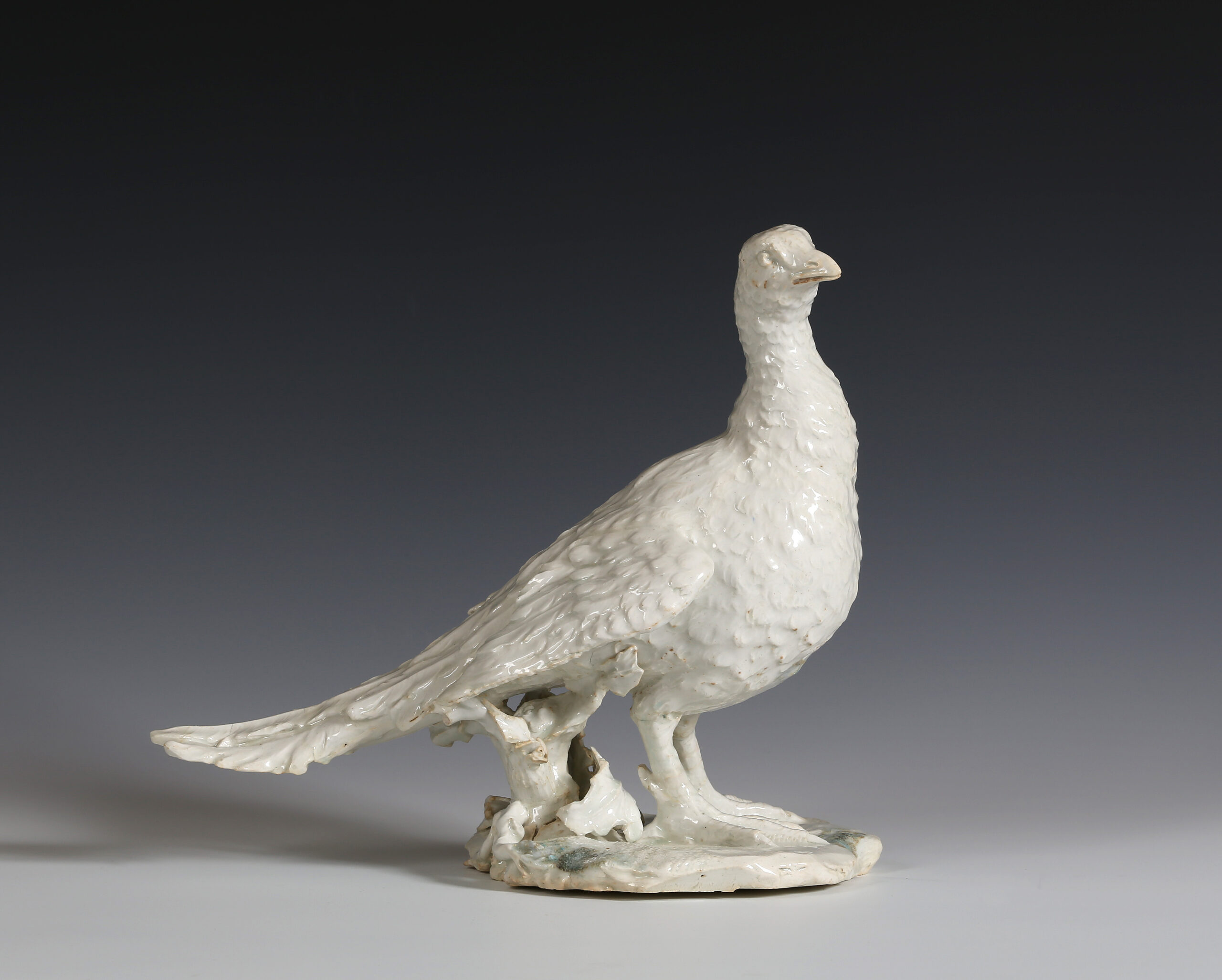This recently discovered pheasant is one of the largest and most accomplished of all early Bow models. The sculptor has caught the alert posture with wings slightly raised for flight with great naturalism. The details of the feathers and the swell of the full crop are carefully defined, it is supported on branches with large leaves and a pinecone. The original terracotta or wax would have been life size, and this, after shrinkage, is only slightly smaller.

The only other recorded examples are the pair sold at Sotheby’s, 21 July 1964, lot 102 for £2000. These were bought by Harry Hyams of Ramsbury Manor and are now in the foundation established there.
They were described as ‘A HIGHLY IMPORTANT PAIR OF EARLY BOW WHITE FIGURES OF PHEASANTS of large size, 10 ¾ in. and10 ¼ in. They noted that ‘These figures which are of unusually large size appear to be unrecorded’.
In its first few years, Bow had access to one or more talented sculptors who produced such masterly figures as Henry Woodward and the Mongolian heads, but the artist has not been identified. Thomas Frye, the prime mover in the factory, was himself a hugely skilled painter, miniaturist and mezzotint engraver but is not known to have sculpted, however he was prominent in the small group of artists who congregated in St Martin’s Lane and so the sculptor is likely to have come from that milieu.
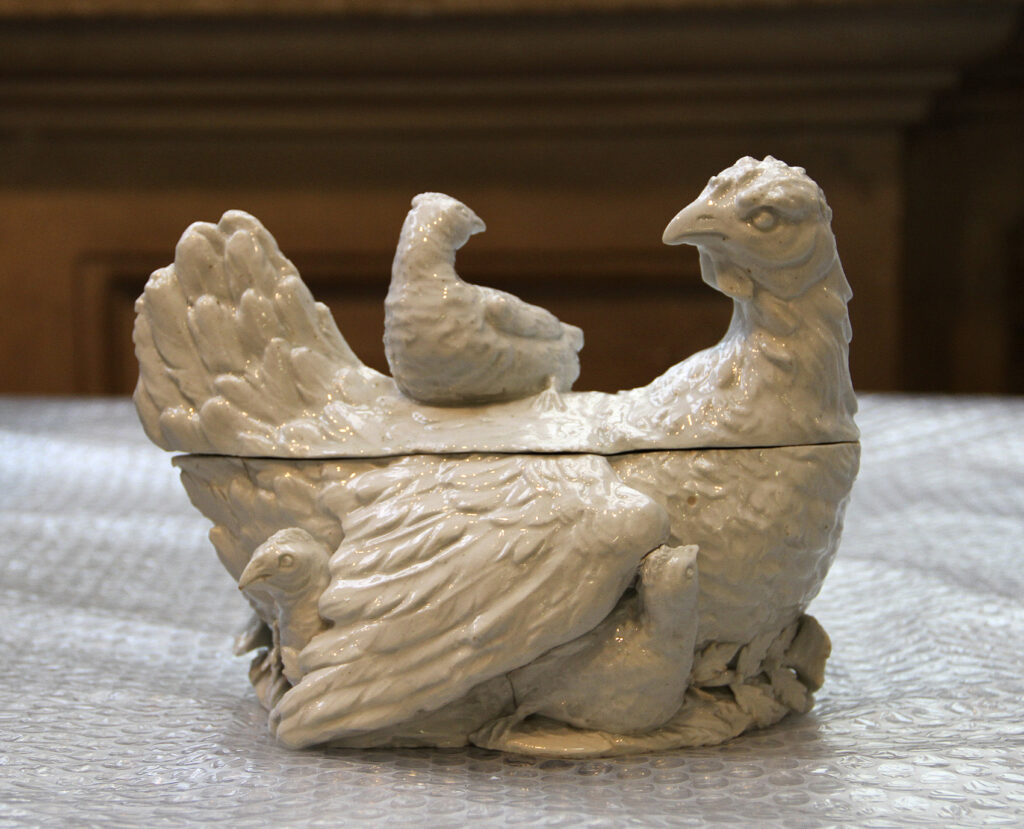
Bow Tureen, Glynn Vivian Art Gallery, Swansea. Glynn Vivian Bequest, NMW A (l) 1862
The similarity in the treatment of the feathers suggest that our pheasant is probably by the same hand as the tureen in the form of a hen with her chicks in the Glynn Vivian Art Gallery.[1] The hen and chicks is modelled after the engraving by Francis Barlow, and whilst Barlow did draw pheasants which were also engraved by Tempest,[2] the extreme naturalism of our model suggest that it was taken from life rather than an engraving.
Paul Crane has made the interesting suggestion that the source might be George Edwards

A broody hen surrounded by her chicks. Engraved by P. Tempest, circa 1690, after Francis Barlow
Paul Crane has made the interesting alternative suggestion that the source might be after the engraving of the long-tailed Grouse from Hudson’s Bay from George Edwards’, A Natural history of uncommon birds and of some other rare and undescribed animals.
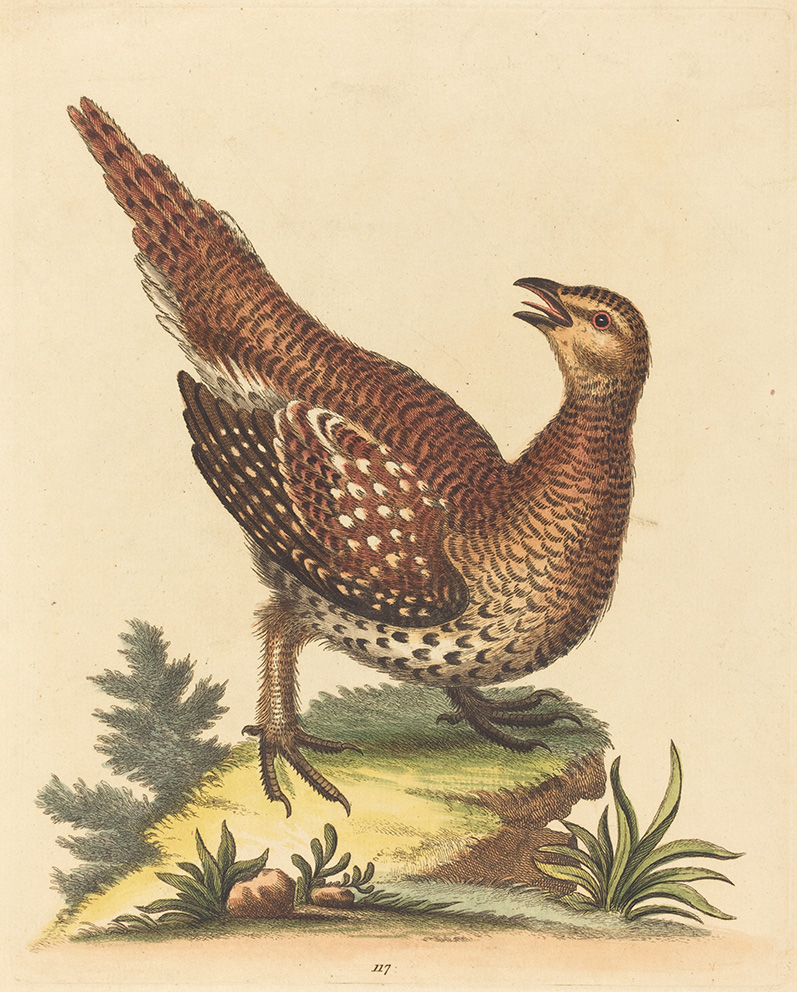
George Edwards’, A Natural history of uncommon birds and of some other rare and undescribed animals Vol. II (1747)
Edwards tells us that ‘this bird is of the bigness of a pheasant, of which genus it is a species. This I was informed is a hen’ he then goes on to say that ‘this bird was brought by Mr Isham of Hudson’s Bay, where it is called a pheasant, its long tail and colour agreeing very well with our Hen Pheasant and the male of this bird may perhaps resemble the Cock Pheasant as nearly. I suppose when living (it was obviously stuffed or dry preserved) it had a red space above its eyes in the form of eye brows. Dr Michel, a physician of Virginia, now in England, on seeing my original draughts of this bird, says, they have the same in the woods and unfrequented parts of Virginia and that the Cock is a stately bird walking very erect.’
[1] A coloured version of the Hen and Chicks tureen is in the Legion of Honor Museum, San Francisco.
[2] https://www.tate.org.uk/art/artworks/barlow-pheasant-heathcock-t11258
Condition:
A section of the end of the tail is missing, perhaps 2.5 cm long and has been restored. Old breaks through legs and branch support. There are two areas on the base with some copper-green colouration which are presumably where metal struts supported the bird during firing.
Conservation report available.
Provenance:
Recently acquired in an auction in Cambridge. It had been in a private collection for as long as the family could remember.
SOLD

